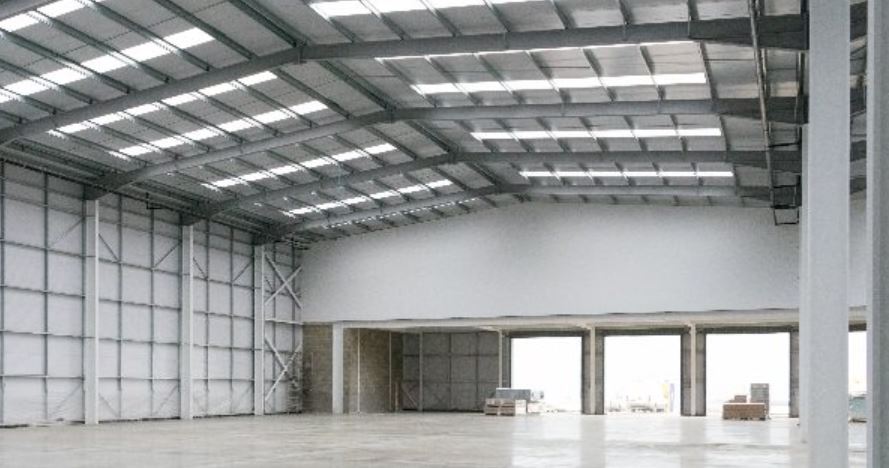
The construction industry has witnessed tremendous growth in the recent past, buoyed by
increased demand for commercial and industrial buildings. The rise in demand has also come with a shift in consumer preferences as technological innovation sweeps through the globe. The construction industry, for instance, has witnessed a new technological wave with the advent of pre-engineered steel buildings (PEBs).For starters, pre-engineered steel building is a modern technology where the complete design, Engineering, Detailing and Fabrication is done off site at the factory and the building components are brought to the site in CKD (completely knock down condition) and then bolted on the site using simple hosing methods in virtually no time. This technological innovation in the building industry has enabled Developers, Architects, Consulting Engineers and End Customers to get the desired control over their construction budgets, quality and times.
In the East African region, for instance, SAFBUILD pre-engineered steel buildings by Mabati Rolling Mills (MRM), has transformed the way steel buildings are constructed. The steel building frames are fully factory-produced to exacting designs and are made from high strength coated steel ready for quick erection and assembly at site.
A quick comparison between pre-engineered and conventional steel shows that using the former, it takes between eight to ten weeks to complete a construction, while using the latter takes between 16 to 20 weeks. Indeed, an efficiently designed pre-engineered building can be lighter than the conventional steel buildings by up to 30 per cent, leading to use of less steel and up to 50 per cent saving on construction time. This is further buttressed by the fact that steel is a highly durable, long-lasting material and requires less maintenance over time.

Other than time saving, PEBs also reduce maintenance time by more than twice; extending benefits to businesses or organizations whose daily operations will be affected if they do not have access to additional space within a given timeframe. PEBs are also weather resistant as the structures are made from highly durable galvanized steel frames that are extremely resistant to the weathering elements.
Customers do not have to worry about corrosion, on site changes, rotting, dimensional changes, termites, and other issues that can arise when natural building materials are used. Besides, steel frames are protected from corrosion by applying a barrier coating that prevents corrosive elements from contacting the steel. This greatly reduces the likelihood of rust and extends the lifespan of the building. Since buildings are supplied with high-quality paint systems for cladding and steel to suit ambient conditions at the site, long durability and low maintenance costs are assured.
PEBs also offer flexibility of expansion in length by adding additional bays. The expansion in width and height is also possible by pre-designing for future expansion. The quality is also assured as buildings are manufactured completely in the factory under controlled conditions. Architectural versatility is another benefit of PEBs. This is because the building can be supplied with various types of fascias, canopies, and curved eaves and are designed to receive precast concrete wall panels, curtain walls, block walls and other wall systems. Finally, as the complete building package is supplied by a single vendor, compatibility of all the building components and accessories is assured.
A study jointly published by the Multidisciplinary Digital Publishing Institute (MDPI) and Sustainability, an international, cross-disciplinary, scholarly, peer-reviewed and open access journal of environmental, cultural, economic, and social sustainability finds that pre-engineered steel buildings prove to be very economical and environmentally friendly as compared to conventional steel frames.
“PEBs result in reduction in factors that are contributing to global warming and pollution, besides saving a lot of landfill space”, the study, titled Design Solutions for Sustainable Construction of Pre-engineered Steel Buildings, finds.
On its part, a 2019 report by TechSci Research valued the pre-engineered building market at around $ 13 billion and is forecast to grow at a Compound Annual Growth Rate of over 11 per cent to reach around USD25 billion by 2024. According to the report, growth in the market is led by rising adoption of off-site construction for commercial and industrial building.
With the continued technological advancements and consumers’ penchant for the best stylish look, high caliber, and quick development, savvy and imaginative touch, there is no doubt that pre-engineered steel buildings are the upcoming future of construction. This could even get better if steel manufacturers continue to invest heavily in research and development.
The writer Manish Garg is the Business Head, Safal Building Systems.




No comments :
Post a Comment